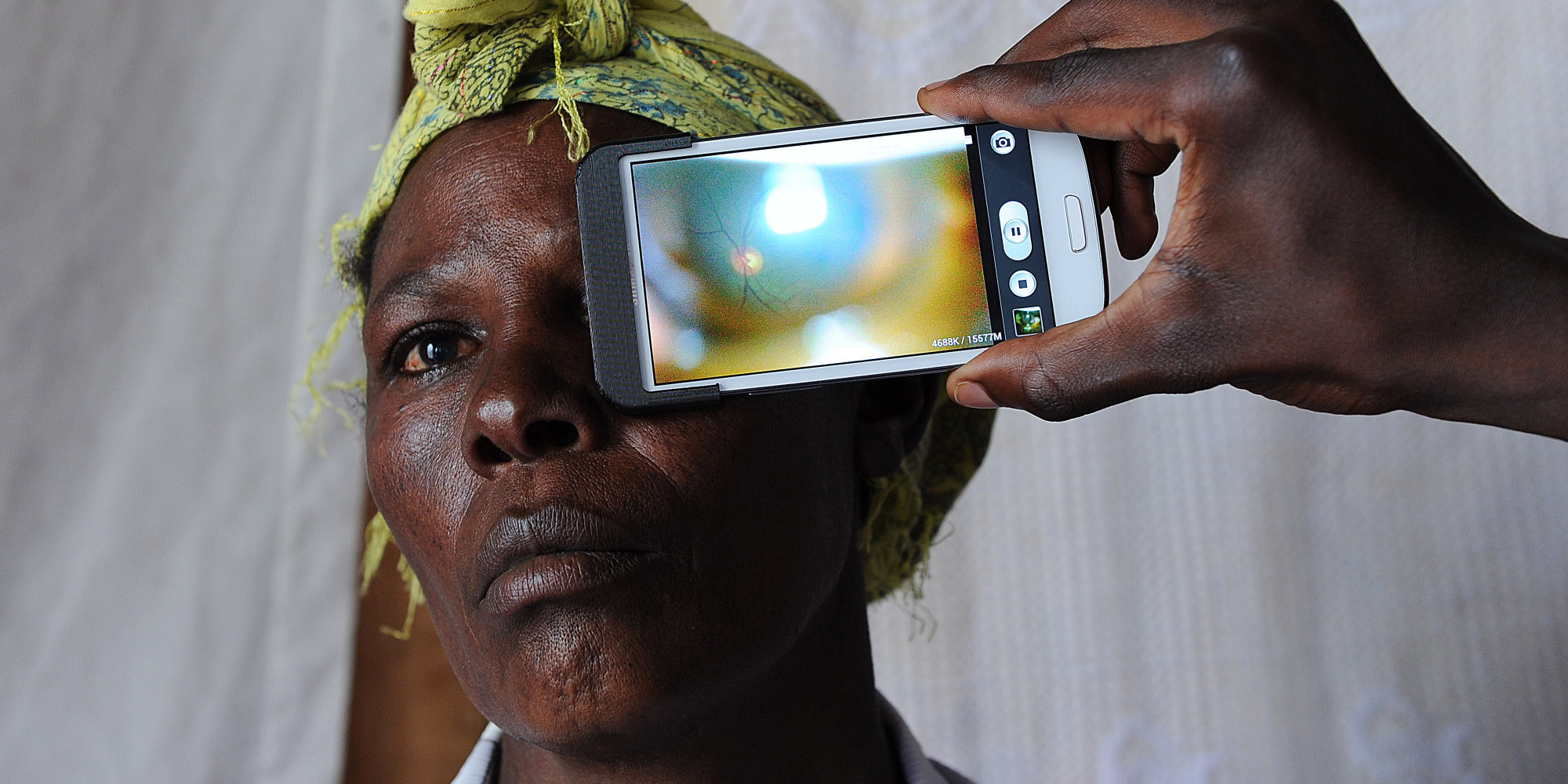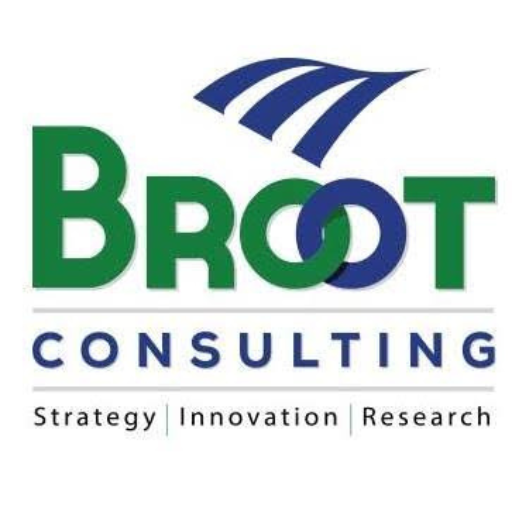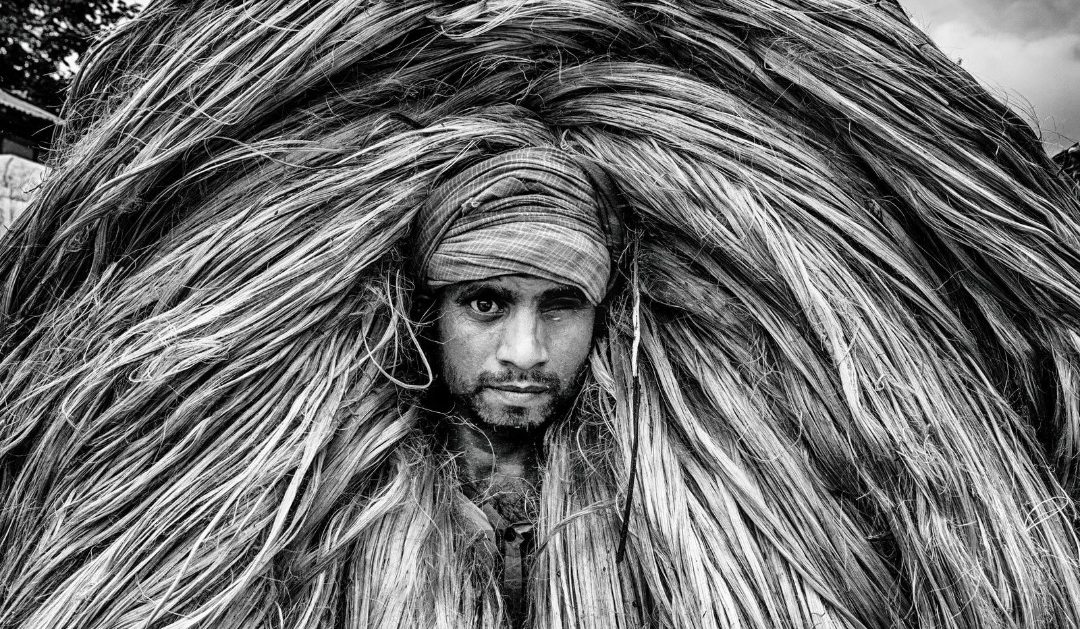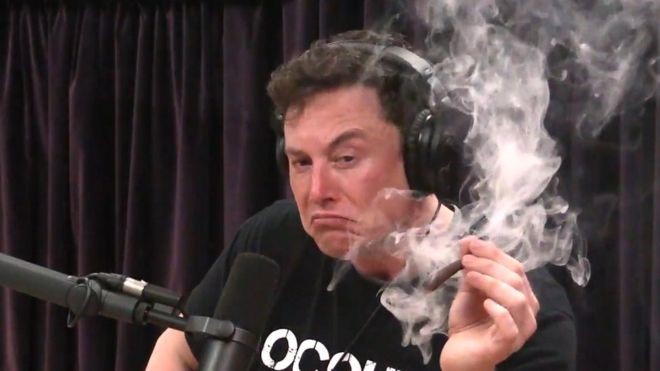
TO GO WITH AFP STORY BY IRENE WAIRIMU
This photo taken on August 28, 2013, in Kianjokoma village, near Kenya's lakeside town of Naivasha, shows a technician scanning the eye of a woman with a smartphone application as she takes part in an ophthalmological study and examination, carried out by technicians from the 'Nakuru Eye Disease Cohort Study', led by Dr. Andrew Bastawrous (unseen) of the London School of Hygiene and Tropical Medicine, in which a smartphone application is used to scan people's eyes and optic nerves, to detect eye diseases, including cataracts and glaucoma. The 'Eyephone app', a smartphone application which can detect eye diseases and disorders, could potentially provide low-income and poor Kenyans with an opportunity to get a quick and effective diagnosis of their eye problems, even in remote rural areas. The equipment used in the study, which has been running for five years and is now in its final stages, is a smartphone with add-on lens that scans the retina, plus an application to record the data. The technology is deceptively simple to use and extremely cheap: each 'Eye-Phone', costs a few hundred euros (dollars), compared to a professional ophthalmoscope that costs tens of thousands of euros and weighs in at around 130 kilogrammes (290 pounds). Dr. Andrew Bastawrous of the London School of Hygiene and Tropical Medicine, who has led the study surrounding the 'Eye-Phone', hopes the 'Nakuru Eye Disease Cohort Study', which has done the rounds of 5,000 Kenyan patients, will one day revolutionalise access to eye treatment for millions of low income Africans who are suffering from eye disease and blindness. AFP PHOTO / TONY KARUMBA (Photo credit should read TONY KARUMBA/AFP/Getty Images)
“In all hospitals, even in clinics, there is no love. When you arrive at the hospital, they give you the patient form. He holds his pen. You tell him: Papa,…





